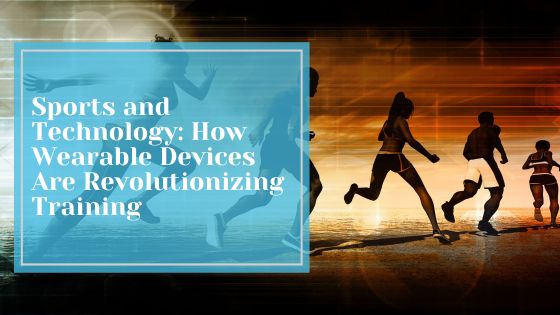In the ever-evolving sports landscape, technology has become an indispensable tool for athletes and coaches alike. From advanced analytics to virtual reality training, innovations in sports tech continue to push the boundaries of what’s possible in athletic performance. One area that has seen significant growth in recent years is wearable devices. These small, portable gadgets are revolutionizing how athletes train, track their progress, and optimize their performance. Let’s delve into how wearable devices are transforming the sports training world.
Monitoring Performance in Real-Time
Wearable devices, such as fitness trackers, smartwatches, and heart rate monitors, provide athletes with real-time feedback on their performance. These devices track heart rate, distance covered, speed, and even sleep patterns, allowing athletes to monitor their training intensity, recovery, and overall health. With access to this data in real-time, athletes can make immediate adjustments to their training regimen to optimize performance and reduce the risk of injury.
Optimizing Training Efficiency
One of the most significant benefits of wearable devices is their ability to optimize training efficiency. By collecting data on various aspects of performance, such as heart rate variability, lactate threshold, and running biomechanics, these devices can provide athletes and coaches with valuable insights into areas for improvement. For example, a wearable device may detect inefficiencies in a runner’s stride and provide feedback on correcting their form to maximize efficiency and reduce fatigue.
Preventing Injuries
Injuries are a common concern for athletes at all levels of competition. Wearable devices can be crucial in injury prevention by monitoring biomechanics, movement patterns, and workload management. By analyzing data collected from wearable devices, athletes and coaches can identify potential injury risks, such as overtraining or poor form, and take proactive measures to mitigate them. Additionally, some wearable devices are equipped with sensors that detect impacts and provide alerts when an athlete may be at risk of injury, allowing for early intervention and prevention.
Enhancing Recovery
Rest and recovery are essential to any training program, and wearable devices can help athletes optimize their recovery strategies. By tracking metrics like sleep quality, heart rate variability, and muscle fatigue, wearable devices can give athletes insights into their recovery status and recommend appropriate recovery techniques, such as stretching, foam rolling, or ice baths. Additionally, some wearable devices have features that measure recovery readiness, allowing athletes to gauge when to push themselves in training and when they may need to dial back to prevent overtraining and injury.
Personalizing Training Programs
The most significant impact of wearable devices on sports training is their ability to personalize training programs to individual athletes’ needs. By collecting data on each athlete’s performance, recovery, and health metrics, wearable devices allow coaches to tailor training programs to optimize their strengths, address their weaknesses, and maximize their potential. This personalized approach to training can lead to more significant improvements in performance and a reduced risk of injury, ultimately helping athletes achieve their goals more effectively.
Conclusion
As technology advances, wearable devices are poised to play an increasingly integral role in sports training. From monitoring performance in real time to optimizing training efficiency, preventing injuries, enhancing recovery, and personalizing training programs, wearable devices offer a wealth of benefits to athletes and coaches alike. By leveraging the power of wearable technology, athletes can unlock their full potential and take their performance to new heights. In the dynamic world of sports, wearable devices are truly game-changers.

